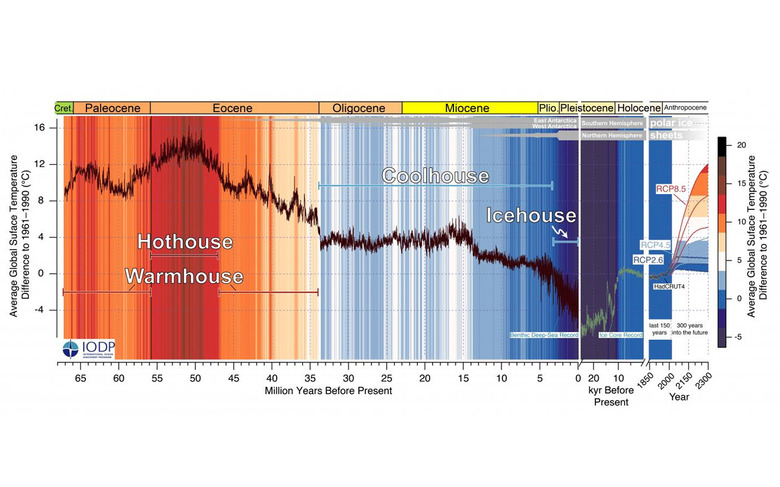Climate researchers warn "hothouse" changes will send Earth temps soaring
A high-fidelity record of variations in our planet's temperatures was created and revealed this week, spanning a cool 66 million years into the past. This timeline is the most complete record of its kind, showing global mean temperatures of our planet, showing four significantly different states. These states were named Hothouse, Warmhouse, Coolhouse, and Icehouse.
Per the research paper published this week, "Here, we present a new, highly resolved, astronomically dated, continuous composite of benthic foraminifer isotope records developed in our laboratories." Each of the four states have their own set of responses to orbital variations. Each of these responses drive small changes in global temperatures VS the giant shifts between each of the four climate states.
"As we reconstructed past climates, we could see long-term coarse changes quite well. We also knew there should be finer-scale rhythmic variability due to orbital variations, but for a long time it was considered impossible to recover that signal," said James Zachos, professor of Earth and planetary sciences at UC Santa Cruz.
"Now that we have succeeded in capturing the natural climate variability, we can see that the projected anthropogenic warming will be much greater than that." Take a peek at the big chart below and see if you can spot the latest trend. (Westerhold et al., CENOGRID)

Per Zachos, the IPCC projections in their "business-as-usual" scenario for the year 2300 will potentially send global temperatures skyrocketing. Projections in the research published this week suggest the global temperature could "bring global temperature to a level the planet has not seen in 50 million years," said Zachos.
For more information on this subject, take a peek at the paper An astronomically dated record of Earth's climate and its predictability over the last 66 million years with code DOI: 10.1126/science.aba6853. This paper was authored by Thomas Westerhold, Norbert Marwan, Anna Joy Drury, et. al. This paper was published in the September 10th issue of Science (the scientific journal SCIENCE).
